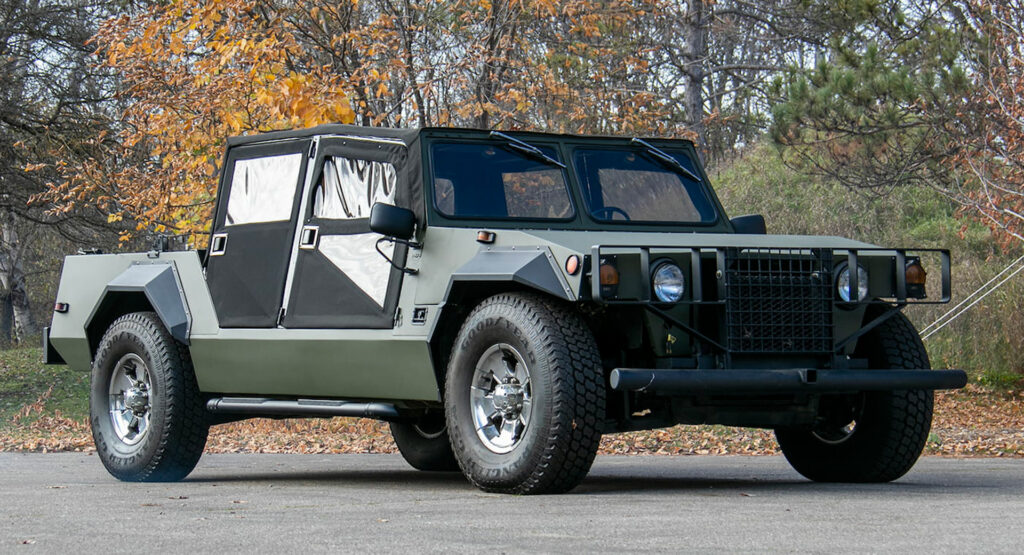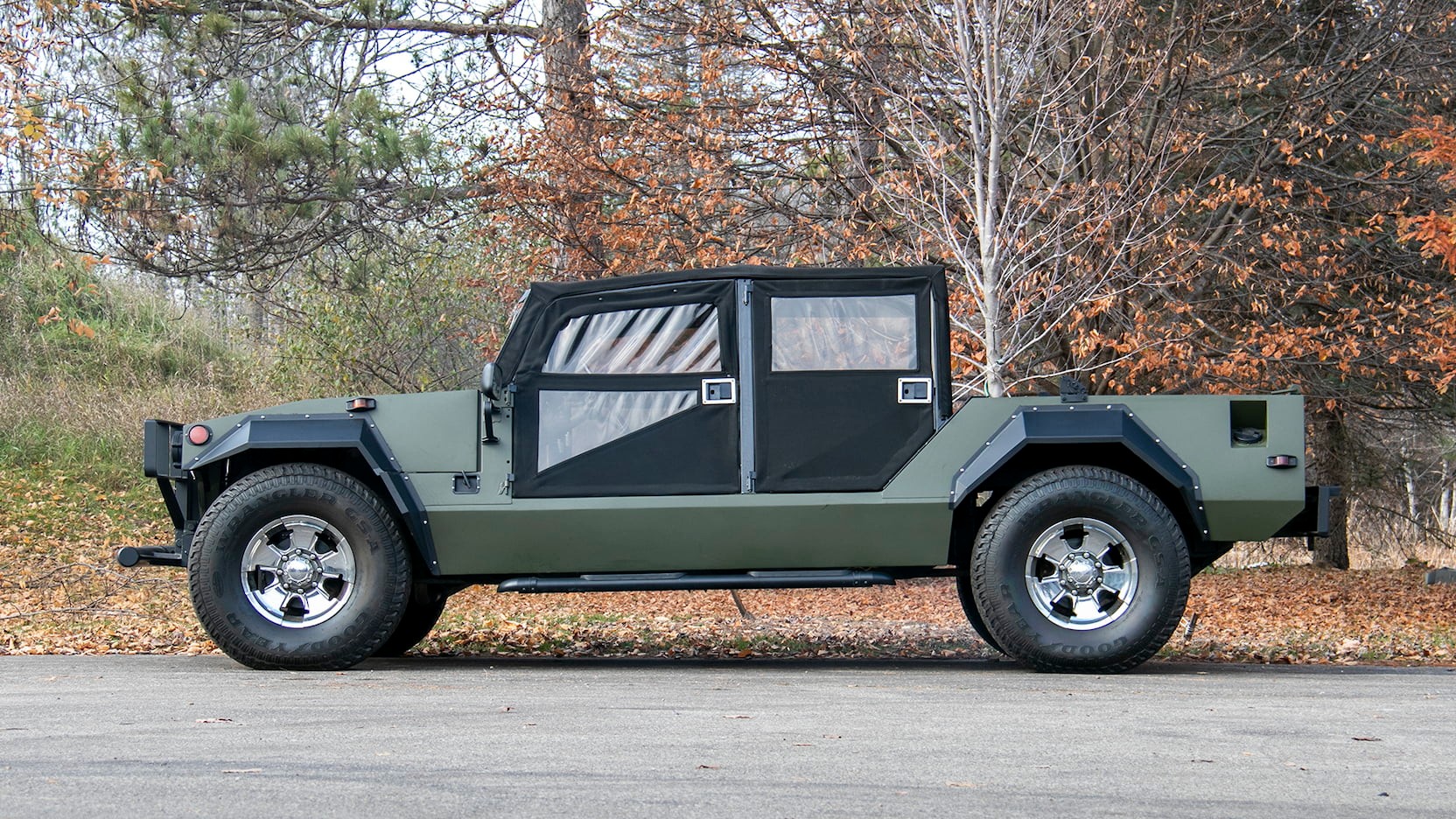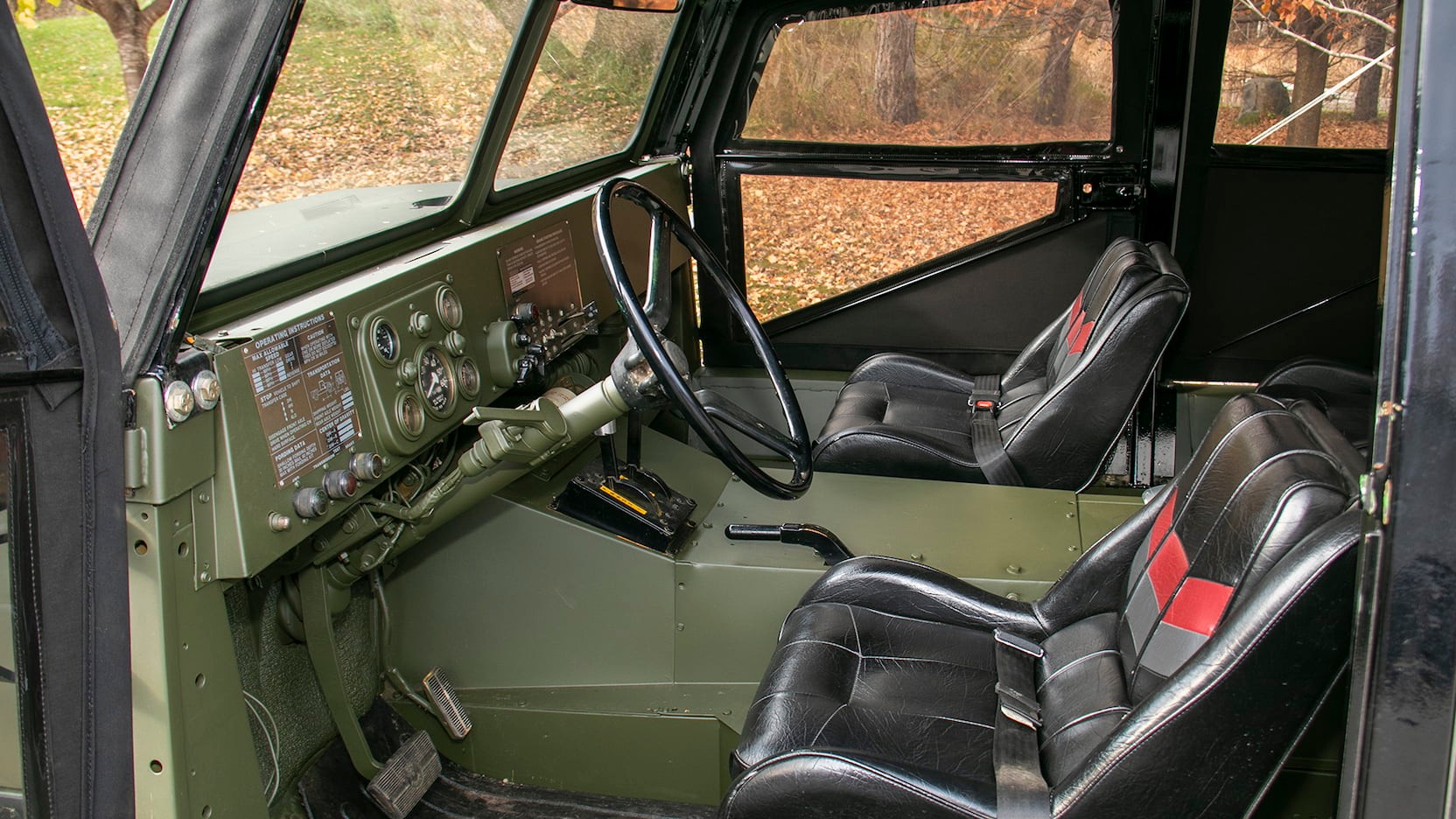Hummer has become a household name, but things could have turned out very differently.
In 1979, the U.S. Army drafted specifications for a High Mobility Multipurpose Wheeled Vehicle (HMMWV) and a handful of companies answered the call. While AM General’s entry was the eventual winner, Teledyne Continental took a chance with the Cheetah.
According to The Online Tank Museum, the design of the Cheetah was created by Mobility Technology International. The company was a Chrysler subsidiary, which also built the Lamborghini Cheetah that was introduced in 1977.
Also: Oshkosh Defense Unveils Hybrid-Electric Joint Light Tactical Vehicle
While the Cheetah originally featured a 5.9-liter V8 petrol engine and a three-speed automatic transmission from Chrysler, the Army’s specifications called for a diesel powertrain. As a result, the Cheetah adopted a 6.9-liter V8 diesel from International Harvester. The Chrysler gearbox was also dropped and replaced by a three-speed automatic from General Motors.
The rest of the story gets a little hazy as Teledyne Continental reportedly submitted a bid to build 11 prototypes that apparently included soft-top, ambulance, and weapons carrier versions. The prototypes were eventually delivered to the Army and subjected to testing in 1982. However, the company failed to secure a lucrative government contract and the model faded into history.
The Teledyne Continental Cheetah is now back in the spotlight as one of them will be auctioned by Mecum in January. The listing is light on specifics, but notes the model has an aluminum body as well as an Olive Green paint job that contrasts with black fender flares.
This particular variant also sports a tubular front bumper, a brush guard, four-wheel drive, and a black soft top with matching doors. They’re joined by angular bodywork, black side steps, a short truck bed, and five-spoke wheels wrapped in Goodyear Wrangler GS-A tires.
There’s no auction estimate, but the Cheetah is being sold without reserve and is bound to attract attention from military collectors.


























